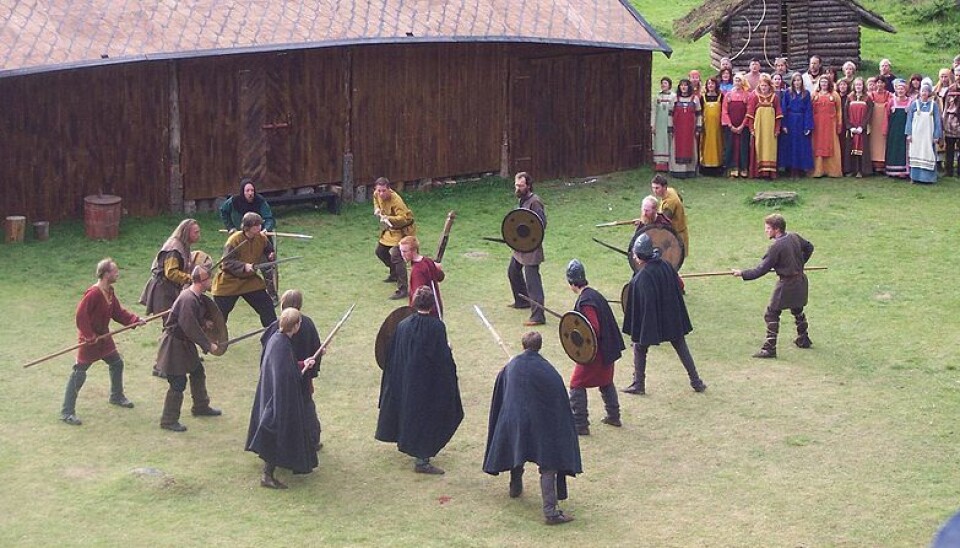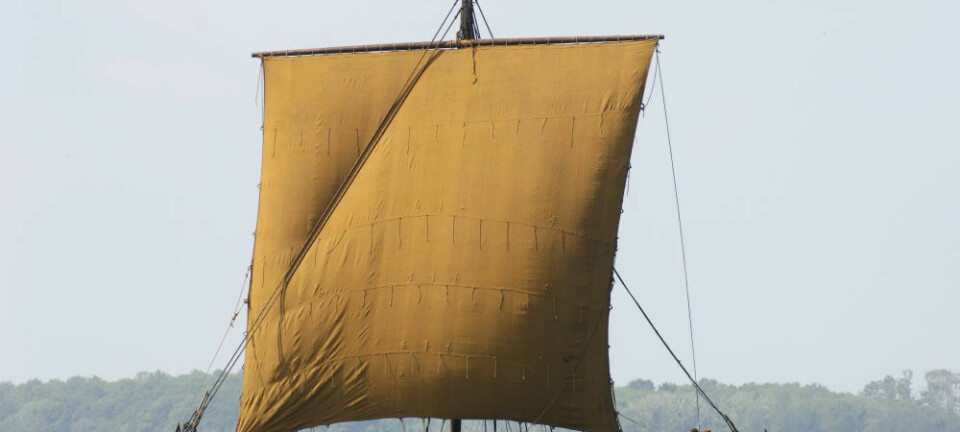
How Vikings killed time
The Vikings played ball, lifted stones and wrestled. Often the games turned violent and bloody, occasionally resulting in death.
Life in the Viking Age was tough and hard, and physical work filled much of their days, but their lives were not without leisure.
In a new study, Leszek Gardela uses archaeological findings and careful reading of Viking sagas to describe how Vikings killed time when they were in mood for entertainment.
The archaeologist paints a vivid picture of Viking life, but the familiarity of many of the activities suggests that while Vikings had shorter lives and arguably vented their frustrations in more violent ways than what most people do today, leisure time in the Viking Age was not too different from leisure time in 2012.
Violence and tests of strength
Many of the physical games which entertained Vikings were violent and served as ways of demonstrating masculine qualities.

According to written accounts, an ideal man had to be strong and skillful, and games were a part of the training.
“The games were very physical and often brutal, sometimes even ending in serious wounds or deaths of the participants,” says Gardela, adding that the games seems to have been about showing off masculine skills such as strength, dexterity and cunning tricks.
An excerpt from the Viking saga of Grettis Asmundarson suggests that wrestling was one popular activity in Iceland:
Then fell certain young men to talking how that the day was fair and good, and that it were well, belike, for the young men to betake them to wrestling and merrymaking. ... Now the sons of Thord, Hialti and Thorbiorn Angle, were the chief men in this sport; Thorbiorn Angle was boisterous beyond measure, and drove men hard and fast to the place of the sports, and every man must needs go whereas his will was; and he would take this man and that by the hands and drag him forth unto the playing-ground. Now first those wrestled who were weakest, and then each man in his turn, and therewith the game and glee waxed great. (1900, English, transl. William Morris & Eirikr Magnusson, from the original 'Grettis saga)
Male strength was also tested in stone lifting competitions, which might be fundamentally the same as today's weight lifting competitions.
Playing ball
Gardela also found that ball games were popular in the Viking Age. In saga literature the games, called knattleikr, involved full body contact, and sometimes included a wooden bat, much like baseball and cricket.
Little is known of the ball games' rules, but sagas suggests that they, too, often ended violently.
An account taken from the saga of Egill Skallagrımsson describes how 12-year-old Egill competed with a boy who was stronger and better than him, despite being a year younger. At one point Egill apparently lost his temper and attacked his younger opponent with a bat, and when he was fought off he went away, only to return with an ax. The younger boy was hit in the head and died.
“This was a violent period and people could get very emotional about the games,” says Gardela, who works at the Snorrastofa Medieval and Cultural Centre in Iceland.
Board games
While muscle power, physical skills and aptitude for violence appeared to be important qualities in the Viking Age, there was also a place for intellectual prowess. Board games were popular.
Many boards and pieces of the Viking era have been found by archaeologists. They have been found in boat graves, and game boards have been carved into chests which were brought on board ships, suggesting that Vikings at sea sometimes killed time with such games.
Board games also play a prominent part in sagas and Old Norse poetry. People who play board games are often described as nobles, and Gardela argues that being skillful in board games was a prerequisite for high-ranking Vikings.
These types of games demonstrated thinking capacity, that they were intelligent people, capable of solving strategic problems.
“Skills acquired in board games could also be used in real life, in the hall or on the battlefield,” says Gardela.
Women participated in drinking games
Vikings also liked partying, and drinking competitions were not uncommon, usually with beer or mead on the menu, and sometimes wine.
Adult women were common participants in the drinking games, but in other games they were less active.
“They mostly acted as the observers,” says Gardela.
People of the Viking age also used miming, mummery and musical performances to entertain themselves.
A pinch of salt, a grain of truth
Asked how trustworthy the sagas are, Gardela says the usual pinch of salt should be applied to the stories.
“But just because the sagas usually date from the 13th century does not mean they should be dismissed,” says Gardela. “There may be a grain of truth in every story, and a good idea is to confront the saga evidence with the archaeological findings.”
The two data sources combined suggest that vikings knew not only how to kill their enemies, but also time.










